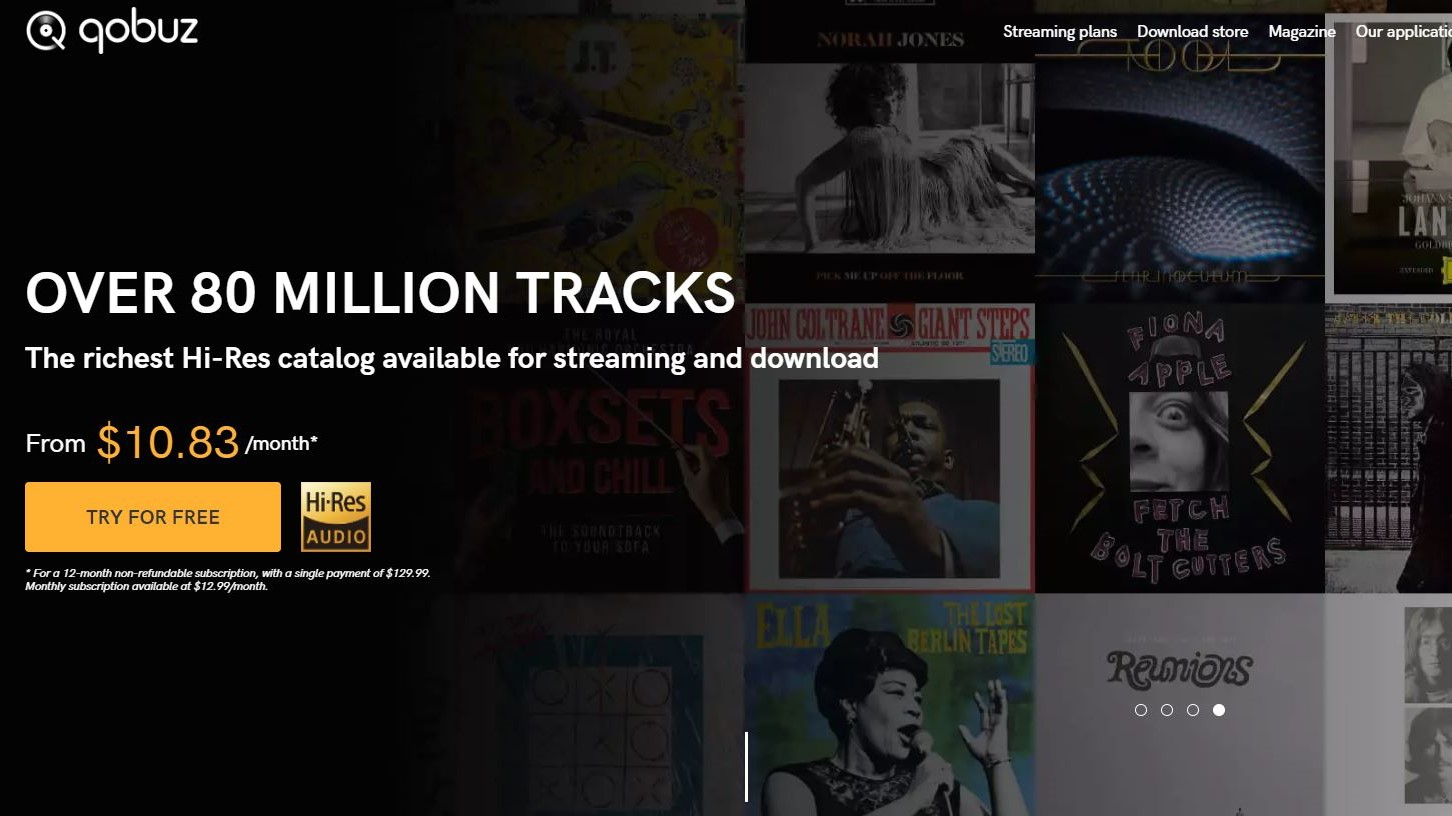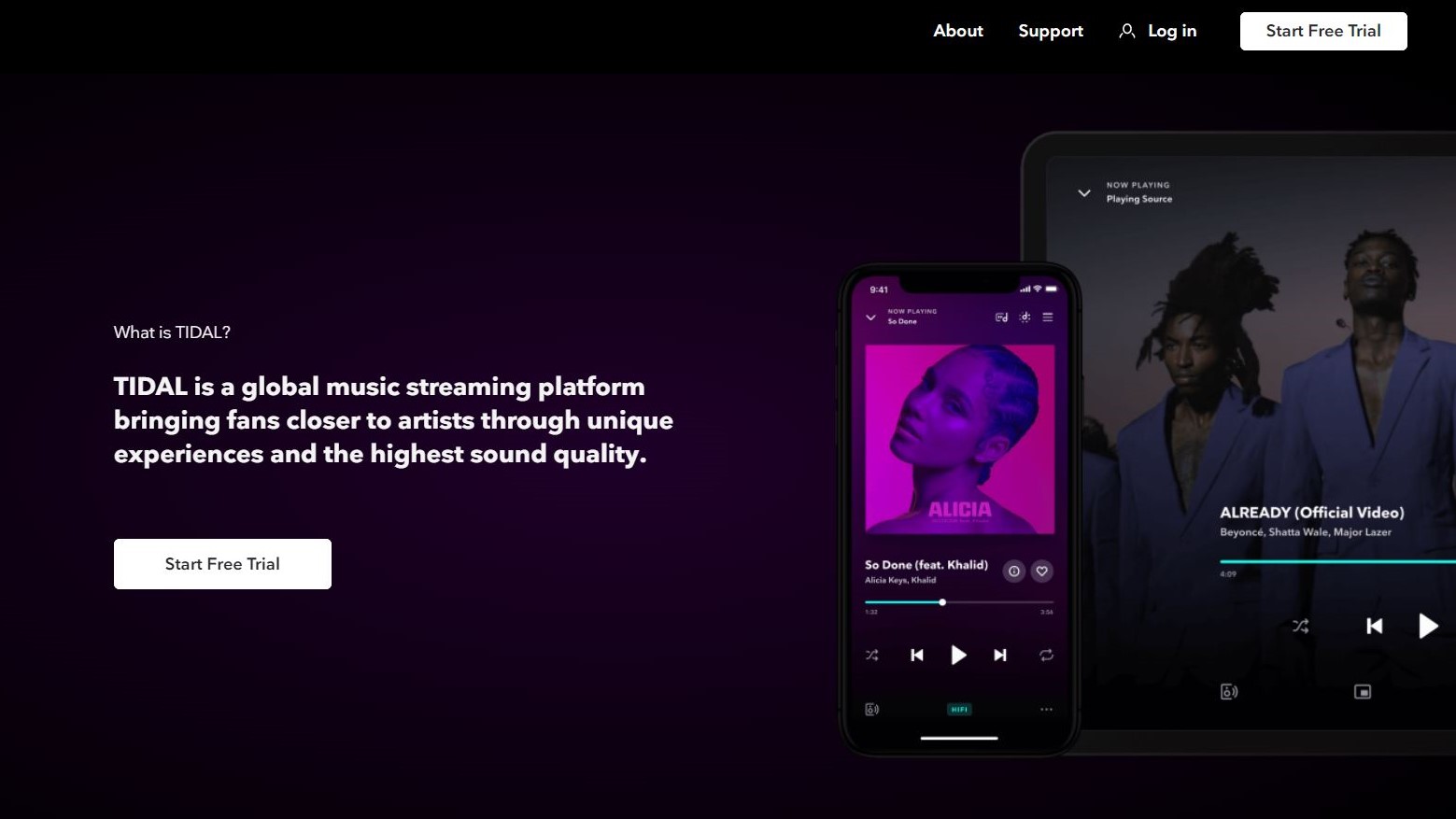Spotify is great but I found Tidal sounds better — here's why
Spotify is one of the most popular music streaming service, but if you care about sound quality you really need to read this

As audio editor and a hi-fi hobbyist, I care a lot about sound quality. Whether its hunting down the best audiophile headphones, best record players, best AV receivers, or best Bluetooth speakers, I am continuously in pursuit of the very best performance from audio products for any given price point.
As you might expect, I have subscriptions to several music streaming services, including a Spotify Premium family plan for day-to-day listening at home, but for serious listening I use Tidal HiFi and Qobuz Studio.

- Tidal HiFi offers CD-quality sound (16-bit/44.1kHz) and costs $9.99 per month, while its HiFi Plus tier adds Master Quality audio (up to 24-bit/192kHz), Dolby Atmos, and Sony 360 Reality Audio content for $19.99 per month.
- Qobuz Studio offers CD-quality sound as well as true hi-res (up to 24-bit/192kHz) for $13 per month (or $129 annual).

Which are the best music streaming services for sound?
One of the major ways streaming services are managing to differentiate themselves from one another is not through the number of songs in their music libraries, nor through platform support elsewhere (although there are some major integration differences between the big-boys and lesser-known services), but through sound quality. You see, not all music streaming services are made the same, and if you’re at all interested in sound quality and experiencing the very best performance through your audiophile headphones or home audio system, there are an increasing number of platforms that cater for your needs.
If we’re talking about higher data rates delivering better sound quality, then there are numerous streaming services that offer potentially superior audio quality over Spotify. For an additional monthly fee, Deezer HiFi, Amazon Music Unlimited, Tidal, and Qobuz all offer CD-quality sound or better. The only counter to this is Apple Music, which bucks the trend to its rivals by offering CD-quality lossless audio for no additional fee at all.
Typically favored by audiophile music lovers like myself and anyone who works in the hi-fi industry, Tidal and Qobuz offer significant sound quality improvements over Spotify Premium, thanks to licencing agreements each has with the major record labels that enable it to access and handle far larger file sizes than Spotify Premium has to offer. Although to be fair, Spotify does have plans for its own CD-quality tier called Spotify HiFi, but negotiations with record companies are rumored to have stalled, and the roll-out hit delays earlier this year.
Ultimately, the ability to access larger audio file sizes means you get to hear your music in better audio quality thanks to the higher resolution the likes of Qobuz and Tidal are able to deliver their content at. And who doesn’t want to experience that?

Streaming for audiophiles
Hi-fi may be an outdated term that conjures up images of cardigan-wearing men from the 1970s claiming the ‘sweet spot’ on the sofa, sat equidistant between a pair of speakers for the perfectly balanced soundstage. Like these original audiophiles, there are plenty who appreciate the benefits of listening to high quality audio and the emotional connection music lovers experience when getting it sounding right.
Get instant access to breaking news, the hottest reviews, great deals and helpful tips.
In fact, most music artists, producers and engineers go to extraordinary lengths to make sure every part of the recording process and production chain is maintained at the finest quality possible. Not just old-school bands with lavish budgets, but up-and-coming artists too. So you really owe it to them to listen to their painstaking work exactly as they intended in the best quality you can get. In my world view, anything less is disrespecting their craft.

As a hi-fi hobbyist, I understand the concept of 'garbage in, garbage out.' Although originally attributed to early computing, in terms of digital audio it means the higher quality the stream, the greater chance you have of experiencing optimum audio performance for whatever device your listening to. And I'm not just talking about hi-fi listening.
If you know anything about wireless audio and Bluetooth connectivity, you’ll know that even with the latest aptX codec support, the short-range connection cannot carry sufficient data to play true hi-res music files no matter how the makers dress up the claims. So even if your music file is at CD quality, you're getting lesser quality over wireless.
If CD-quality is represented at 1,411kbps, even with sophisticated codec support such as aptX HD achieving better bandwidth handling over wireless, it maxes out 566kbps. Sony's LDAC codec does better at up to 990kbps, but you'll need a supported source and compatible wireless headphones such as a Sony Xperia phone partnered with the Sony WH-1000XM5 headphones or Sony WF-1000XM4 earbuds, say.
Of course, to hear the true full potential of the highest quality digital streams you'll need to use a wired connection from your playback source, or listen via a home hi-fi with full range speakers that fully supports hi-res playback without any comprises (or degradation) in any part of the digital audio signal chain.
Resolution revolution: 4K for audio
Many of us appreciate the step-up improvement in picture quality from standard definition to 4K images on the best TV screens, and how this impacts our overall viewing engagement. But for some reason, we're generally far less concerned about similar sorts of improvements when it comes to audio quality.
Is it that we’re less concerned about the quality of what we listen to compared to the quality of what we watch? Or is it that the benefits of better image resolution on our TV screens and portable devices is better understood and more evident than the benefits of better quality audio?
The impact better audio quality can have on the way we experience and connect with music can be difficult to grasp until we've experienced it. Some may not have bothered to explore the potential of better sound quality because of a perception that subs to these services cost more. This was certainly the case when these hi-res services launched, but both Qobuz and Tidal have become much more competitive recently and have modified pricing structures to attract anyone looking to move away from Spotify to services like Tidal that also offer better pay deals for artists.
My guess is that it's a combination of all these points, as well as the fact that whether we realise it or not, our brains do a lot of work to compensate for low-quality audio data by 'filling-in' (or interpolating) the missing elements of what we hear when listening to audio at low data rates. A kind of psycho acoustic effect, if you will.
If you're still not convinced about the benefits a high-quality streaming service can bring to your enjoyment of music, give it a try for yourself by signing up to one of the free trials, but remember to quit before the trial ends to avoid incurring charges. Of course, I really hope you can hear and enjoy the difference in sound quality these services bring to your music listening and discover exciting new elements to your favorite tunes you've not heard before. But if you don't, be sure to let me know.
More: Find out how the best music streaming services compare.
Also, want to get the most from your Tidal HiFi subscription? Make sure you know about these 10 hidden Tidal features to make your streaming experience sound even better. And check out the free Rewind app that lets you travel back in time to any year in music.

Lee was Tom's Guide's audio editor, where he covered all things audio for Tom's Guide, including headphones, wireless speakers and soundbars and loves to connect and share the mindfulness benefits that listening to music in the very best quality can bring. As a former editor of the U.K.'s Hi-Fi Choice magazine, Lee is passionate about all kinds of audio tech and has been providing sound advice to enable consumers to make informed buying decisions since he joined Which? magazine as a product tester in the 1990s. Lee has joined the passionate audio experts at audiograde.uk where he writes about luxury audio and Hi-Fi.
